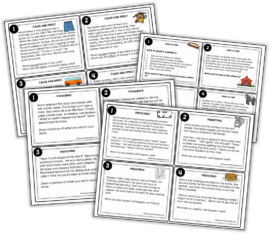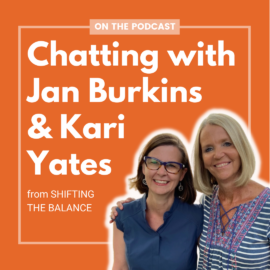Today I’m sharing a synthesizing lesson to help your child become a more thoughtful reader.

(This post contains affiliate links.)
Welcome back to the reading comprehension strategy series I’m doing with This Reading Mama! This week we’re tackling one of those strategies that makes people say, “Huh?”
Synthesizing.
Making connections, predicting, questioning… those were pretty straightforward. But synthesizing? Maybe we can just skip this one.
It’s true that designing a synthesizing lesson can be complicated and even confusing. But don’t worry – I’ve got a simple one for you today.
Let’s start with a definition.
Synthesis. Noun. The process through which readers bring together their background knowledge and their evolving understanding of the book to create a complete and original understanding of the text. (from Debbie Miller in Reading with Meaning)
Here’s a helpful way to look at it.
At first, when you’re reading the book, you think one thing. But as you keep reading, your thinking changes. And at the end, you think something different.
Now. What could be the perfect type of story to teach synthesizing?
Fables!

Think of the classic Tortoise and the Hare (and I’m sorry, but I couldn’t resist that stock photo). What do you think the story is about when you first hear it? It’s about a turtle and rabbit having a race. The rabbit is proud, and the turtle is determined. But as you read on, you see there’s more to the story. By the end, you know the story is really teaching a lesson… slow and steady wins the race.
To teach this lesson to my second grader, I pulled out our favorite book of fables for kids. Fables is a book of original stories by Arnold Lobel and a winner of the Caldecott medal for its wonderful pictures.

The lesson
Read a fable together, write its title, and then give a short summary of what it’s about on the surface. Then, write what it’s really about (the moral) in your own words.
Tip. Synthesizing is a challenging comprehension strategy. Help your child out by picking a fable with a very clear lesson.
After starting out with a fable that had an unclear moral, I chose one that I knew she could understand. It was the story of The Bad Kangaroo. The little kangaroo’s principal goes to visit his home because he’s been acting out at school: throwing spitballs, putting tacks on chairs, and setting off firecrackers in the bathroom. But at the little kangaroo’s home the principal learns that his parents love to play those jokes as well!

To you and me, filling out this chart sounds pretty simple. But be sure to give your child a lot of support the entire way through, because this is not easy stuff.
I asked her what the story was about.
“It’s about a bad kangaroo.”
“Okay… what else?”
“He throws spitballs at school.”
“Well, we don’t need to give every detail. We’re just telling what the story is about in general. A kangaroo is bad…”
“And his parents are bad.”
“Great! Let’s write that down.”
The lesson is that if children behave badly, it may be something they learned from their parents. But this conclusion was very hard for her to come to. She really wanted to write the conclusion in the book itself: “A child’s conduct will reflect the behavior of his parents.” I wanted her to understand that we needed to write a lesson a second grader would say, not the one the author wrote.

Finally, she wrote, “When a kid is naughty, it might mean the parents are naughty.”
(By the way, I am not in full agreement with this particular moral ;)).
We continued the lesson for two more fables. In the classroom, I’d recommend doing this as a class many times (over different class periods) before expecting your students to fill out the printable. At home, you can simply fill out the page right beside your child.
The point is not to frustrate. It’s to develop greater understanding and comprehension. Eventually your child will be able to do this all by herself. Just give her lots of support and patience!
More ideas for teaching synthesizing
- Before having your students read a thought-provoking piece of literature, pose a question related to it. Have them answer it in writing. After reading the story, have them answer it again and see how their thinking changed.
- Use a compare/contrast chart when reading nonfiction. Make a 3-column chart, with the first and third columns being the two things you’re comparing – such as the colonists and the British, or amphibians and reptiles. Have your students write what’s different in the first and third columns and what’s alike in the center column.
- Have your students stop at predetermined spots in a story to answer these writing prompts: “I’m thinking…” “Now I’m thinking…” and finally, “And now I’m thinking…” This can be a great partner activity!

Get your free printable chart!
MEMBERS GET MORE!

Looking for more reading comprehension activities? Members of The Measured Mom Plus get task cards, comprehension passages, and a whole lot more! Learn more about membership here.






Alexa
Any ideas on how to make this harder for 4th grade?
Anna G
I don’t at the moment, Alexa, but here’s a blog post that should be helpful! http://www.outofthisworldliteracy.com/3-books-and-lessons-for-teaching_22/
Deborah
I’ve been wanting to do some work on Fables – so this has come at a great time. Thank you. :o)